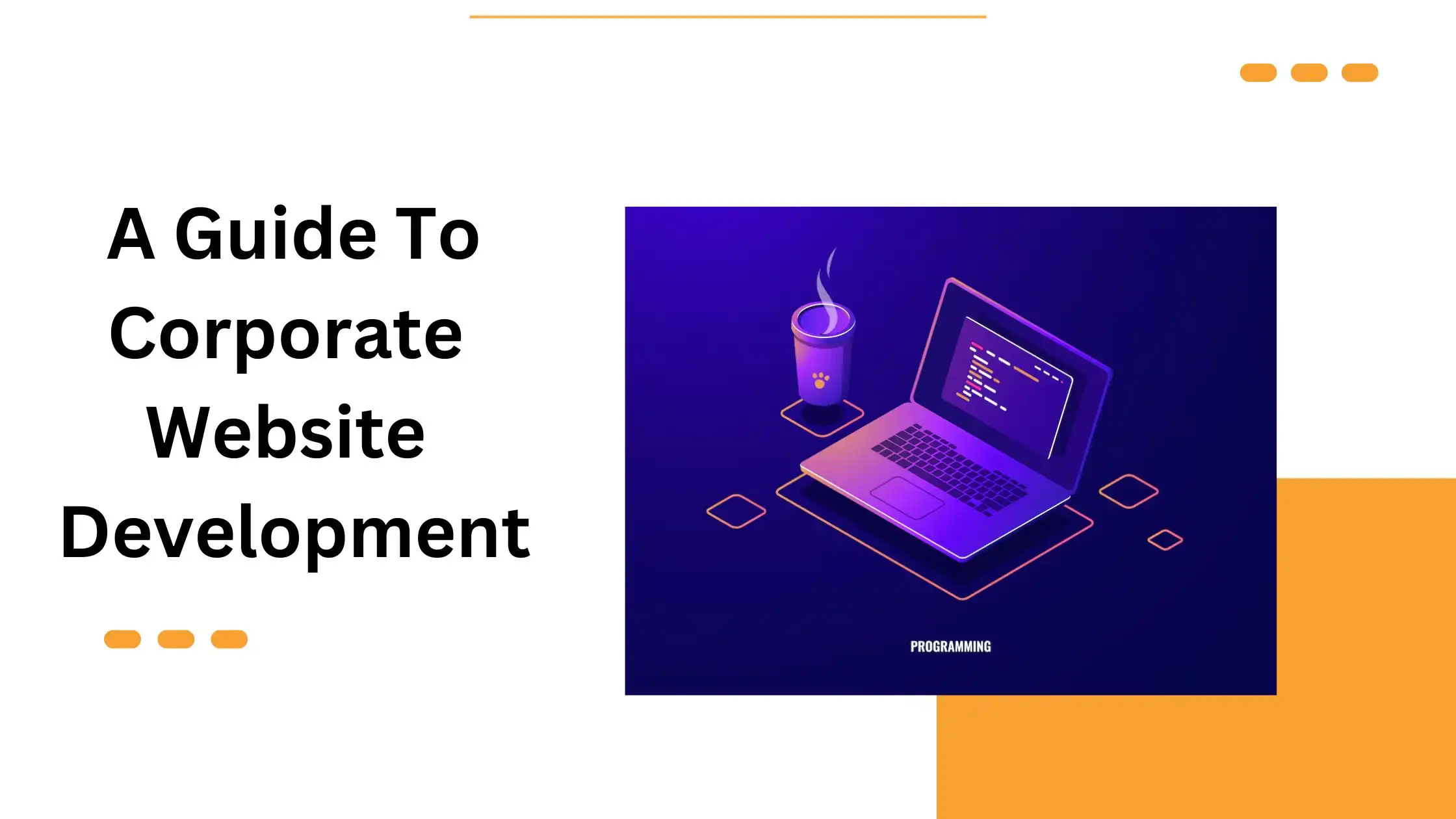
We use cookies and similar technologies that are necessary to operate the website. Additional cookies are used to perform analysis of website usage. please read our Privacy Policy
Corporate Website Development: A Step by Step Guide

In today’s competitive business world, a corporate website is essential for any company that wants to stand out. While some may disagree for various reasons, a strong online presence is undeniable.
Confused about the difference between a corporate website and a personal one? Both provide information to an audience, but a corporate website sets itself apart from the start. It uses a professional tone, with frequent updates to keep visitors informed.
Developing a corporate website is not as simple as launching a personal blog. A well-defined plan is crucial to avoid challenges and unnecessary expenses.
Let’s explore how to create a corporate website that is the perfect digital face for your business.
What is a corporate website?
Designed with professionalism, corporate websites are a company’s dedicated online space to effectively showcase and promote their offerings.
More than just a virtual address, a well-crafted corporate website is a strategic hub for building brand identity. It presents essential information like the company profile, operations, staff, and upcoming events. Client-focused content—testimonials, partnerships, stakeholder information, and case studies—further strengthens the website’s appeal.
Beyond its promotional role, the corporate website fosters customer engagement by providing channels for feedback collection and enhanced customer support.
The primary goal shifts from solely promoting products or services to a broader objective: enhancing the company’s reputation, providing exceptional support, and upholding its core mission and values.
This approach applies not only to corporations but also to any organization seeking to establish a strong online presence, such as educational institutions, non-profit organizations, and established brands.
6 Steps to Build a Corporate Website
1. Define your requirements and objectives
Before you jump into website development, take a step back and map out your online strategy. A successful corporate website hinges on understanding what you want to achieve.
Here’s how to pinpoint your goals and set your website up for success:
- What’s your company all about? Write down what you’re good at and what makes you special.
- Who are you trying to reach? Think of your ideal customer—who are they and what do they need?
- What do you want visitors to do? Do you want them to buy something, contact you, or learn more?
- Make it easy for them! If you want contacts, add clear ways for people to reach you.
By planning a bit, you can build a website that works hard to bring you business, just like a super salesperson!
2. Choose the right technologies
Choosing the right technology for building a corporate website is really important. It affects how well the website works, how fast it is, and how easy it is to keep it working properly.
Content Management System (CMS): Pick a CMS that’s easy to use, so you can add, change, and manage content without needing to be a tech whiz. Make sure it can be customized to fit your company’s unique needs.
Web development frameworks: These are like toolkits that make building websites faster and easier. Choose one that matches the size of your website and the skills of your team.
Security: Keeping the website safe from hackers and other threats is crucial. Use things like SSL certificates and regular security checks to protect sensitive information and keep everything up-to-date.
3. Professional website design
Developing a corporate website is about combining strategy and creativity to show who they are and what they do online. It involves making sure the website looks good, works well, and is easy for people to use.
First, figure out what you want your website to do and look like. Look at other websites design for ideas. Then, organize your content into categories and subcategories so people can find what they need easily.
Make rough drafts of how the website will look and ask people for feedback early on. Use the same colors, fonts, and logos throughout to make it consistent and recognizable.
Make sure the website is easy to use, especially on phones. This will make people happy and keep them interested in what you have to offer.
4. Development and implementation
During this stage, the focus shifts towards transforming conceptualized ideas into a fully operational and engaging digital platform. From coding and programming to database development, every aspect is essential. Establishing a scalable structure capable of accommodating future expansion is crucial. Anticipating potential increases in traffic, content volume, and additional features helps mitigate the need for significant adjustments as your enterprise evolves.
Empower web designers and software developers to select the most suitable tools and programming languages, including frameworks and libraries, to construct the foundation of the corporate website. The objective is to ensure alignment with the business objectives, requirements, and user expectations.
Simultaneously, prioritize content development. This entails creating compelling text for various website components, such as headings, subheadings, tags, sections, and hyperlinks. The content should captivate visitors’ interest effectively.
5. Run tests to check website performance
Testing and quality assurance play important roles in the software development lifecycle. It’s crucial that your website undergo thorough testing to ensure adherence to specified requirements, proper functionality, and a satisfying user experience. Neglecting this phase can lead to various issues, such as typos, broken links, and non-responsive layouts, potentially harming your business upon launch.
Prioritize performance testing to enhance loading speed and ensure cross-browser compatibility by testing across different browsers and devices, aiming for a uniform experience across all platforms. Engage end-users during testing to gather valuable feedback, address their concerns, and align with their preferences, ultimately enhancing the overall user experience.
6. Launch your site
Once your corporate website goes live, it’s crucial to recognize that this milestone doesn’t mark the end of the journey. In fact, it’s just the beginning. Post-launch activities are essential for ensuring the sustained success, performance, and relevance of your website over time.
After deployment, it’s important to regularly monitor the website for performance issues, security vulnerabilities, and downtime. Establishing a maintenance schedule is key to addressing updates, patches, and improvements. For instance, to keep the content fresh, regularly adding posts, updating images, and removing unnecessary widgets is essential.
Routine tasks such as updates, backup procedures, and source code maintenance should be carried out on a daily, weekly, or monthly basis, depending on the requirements. These efforts are essential for maintaining the integrity and functionality of your website in the long run.
Conclusion
In conclusion, starting on the journey of corporate website development is a significant endeavor for any business. This step-by-step guide provides a comprehensive overview of the process, emphasizing the importance of strategic planning, meticulous design, and diligent implementation.
For businesses seeking professional guidance and expertise, partnering with a reputable website development company in Australia is essential. By collaborating with a trusted team of experts, businesses can ensure a smooth and successful website development experience.
We are here
Our team is always eager to know what you are looking for. Drop them a Hi!
Zealous Team
Meet the Zealous Team – your dedicated source for cutting-edge insights on the latest technologies, digital transformation, and industry trends. With a passion for innovation and a commitment to delivering unparalleled expertise.
Table of Contents
×

Comments